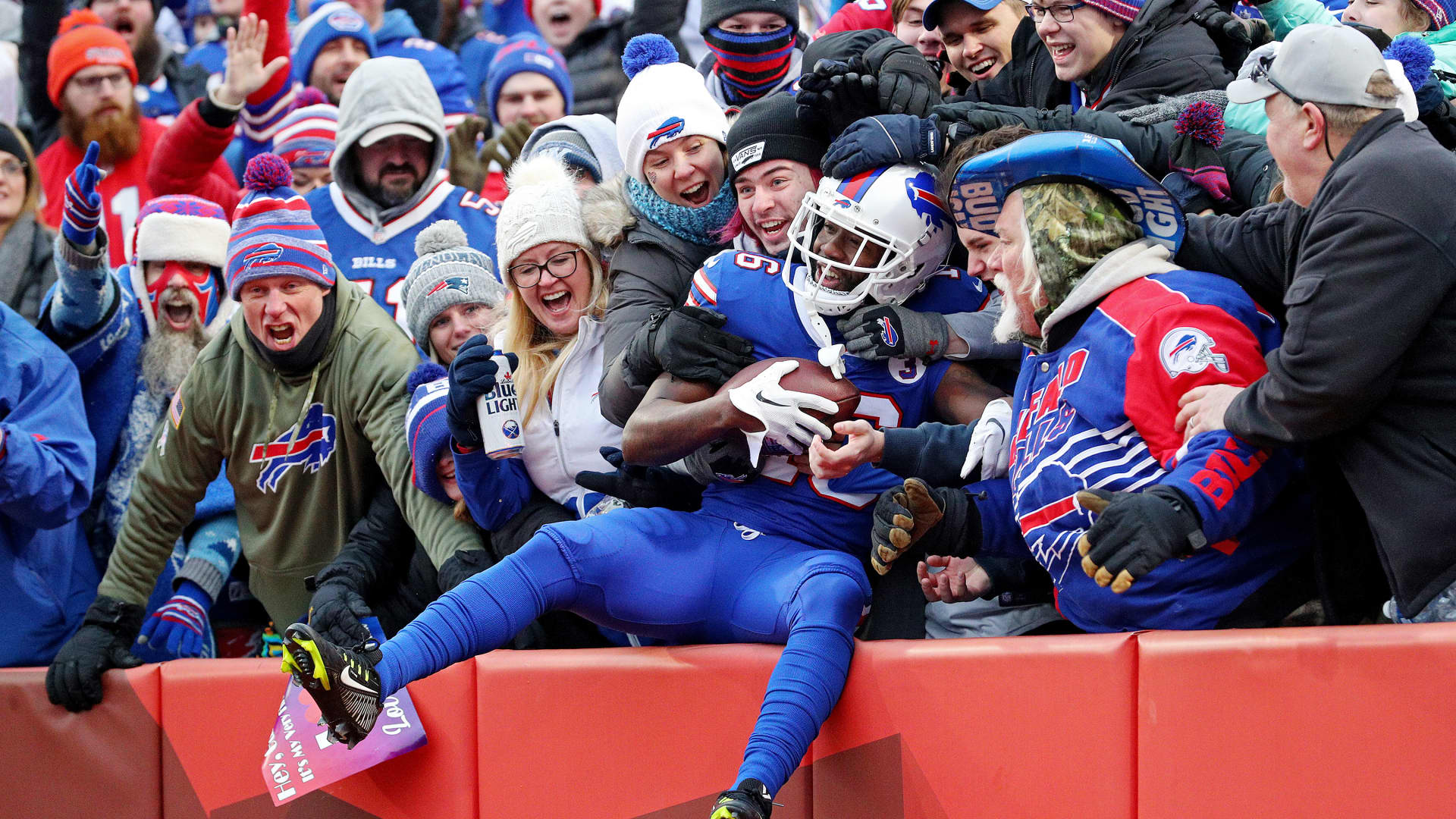John Brown #16 of the Buffalo Bills celebrates with fans after catching a touchdown pass during the third quarter against the New England Patriots at Highmark Stadium on January 08, 2023 in Orchard Park, New York. (Photo by Bryan M. Bennett/Getty Images)
Bryan M. Bennett | Getty Images Sport | Getty Images
Dan Hornberger has been a fan of the National Football League’s Philadelphia Eagles for as long as he can remember. As an adult, his office has team memorabilia lining the walls.
Last year, the devout supporter went to five home games, about an hour-and-a-half drive from his house. This year, however, Hornberger’s only on track to attend two games as costs soar.
“I’m a huge fan,” Hornberger, 40, said. “Ultimately, what it comes down to is just outright refusal on my part to pay those kinds of prices.”
Sports prices have surged this fall, according to federal data. That’s made game tickets the latest victim of “funflation,” a term used by economists to explain the increasing price tags of live events as consumers hanker for the experiences they lost during the pandemic.
‘A gigantic bounce back’
Admission prices for sporting events jumped 25.1% in October 2023 from the same month a year prior, according to the Bureau of Labor Statistics’ consumer price index data. The category saw the highest annualized inflation rate out of the few hundred that make up the inflation gauge.
CPI as a whole rose a relatively modest 3.2% on an annualized basis. The index tracks the prices of a broad basket of items including milk, jewelry and airline fares.
“We’ve seen this through the entire leisure and hospitality sector,” said Victor Matheson, a professor and sports economist at the College of the Holy Cross. “People are getting back to things that they enjoy doing and are willing to pay a bunch.”
Part of the reason consumers may be seeing higher ticket prices for their favorite sports teams is because of the increasing use of dynamic pricing models, Matheson said. These structures allow…
Read the full article here

Leave a Reply